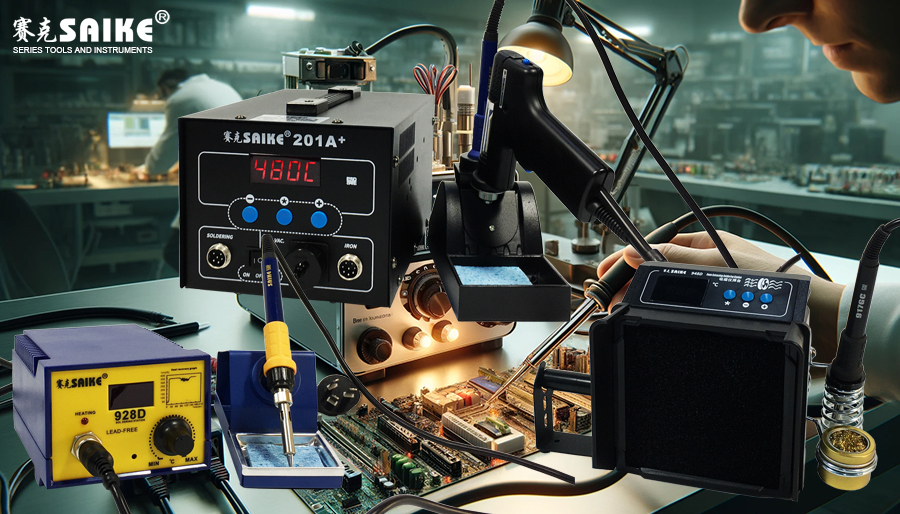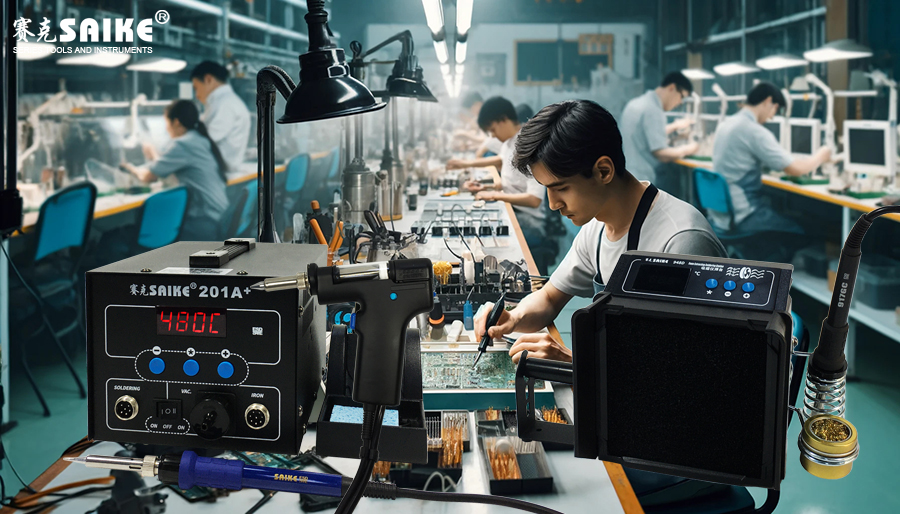
SK-YJ000HT-KP 100006
The temperature control system and sensors of the soldering station play a crucial role in the soldering process, ensuring stability and soldering quality. Below is a detailed introduction to the working principles of the soldering station’s temperature control system and sensors and their applications in soldering.
I. Temperature Control System
1.Components:
– Heating System: Typically, resistive heating wires are used as the primary heating element, generating heat through electrification. These heating wires are generally wrapped inside or at the bottom of the soldering station and are closely connected to the temperature control system.
– Temperature Controller: This is a device that can automatically adjust the temperature. By sensing the temperature of the soldering station and controlling the output power of the heating system based on the set temperature range. The temperature controller is usually equipped with a digital display screen and various function buttons, enabling users to easily adjust according to their needs.
2.Working Principle:
– When the soldering station temperature is lower than the set temperature, the temperature controller increases the output power of the heating system, allowing the soldering station to heat up quickly.
– When the soldering station temperature reaches or exceeds the set temperature, the temperature controller reduces the output power of the heating system or temporarily turns off the heating system to prevent the soldering station from overheating.
3.Temperature Control Precision and Stability:
– The precision and stability of the temperature control system are crucial for soldering quality. A high-precision temperature control system ensures minimal temperature fluctuations during the soldering process, thereby improving the quality and strength of the soldered joints.
II. Sensors
1.Temperature Sensors:
– Used to measure temperature changes during the soldering process and provide timely feedback to the soldering operator or temperature control system.
– This helps workers or the system adjust soldering parameters to ensure soldering quality.
2.Other Sensors:
– In addition to temperature sensors, the soldering station may also be equipped with pressure sensors, displacement sensors, gas sensors, etc., to monitor various parameter changes during the soldering process.
– These sensors can provide information about the quality, shape of soldered joints, and harmful gas concentrations, helping workers better control the soldering process.
III. Applications and Advantages
1.Improved Soldering Quality:
– With precise temperature control systems and sensor feedback, solderers can more accurately control the temperature and other parameters during the soldering process, thereby improving the quality and strength of soldered joints.
2.Increased Work Efficiency:
– Automated and precise temperature control systems reduce the time spent by solderers on manual parameter adjustments, improving work efficiency.
3.Enhanced Safety:
– The temperature control system and sensors can monitor the temperature and other potential risk factors in real-time during the soldering process, promptly issuing alarms or taking protective measures to ensure the safety of the solderers.
4.Energy Conservation and Environmental Protection:
– Precise temperature control systems can avoid unnecessary energy waste, reducing energy consumption and costs.
IV. Summary
In summary, the temperature control system and sensors of the soldering station play a pivotal role in the soldering process. They not only improve soldering quality and efficiency but also enhance the safety, energy conservation, and environmental protection of the soldering process. With continuous technological advancements and innovations, the temperature control system and sensors of soldering stations will become even more intelligent and efficient in the future.


